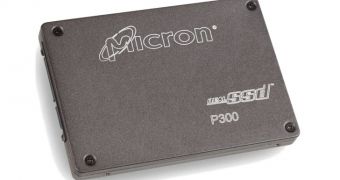Despite the PC market declining, not all sub-segment have suffered a drop in demand, solid-state drives least of all. True, the NAND Flash market hasn't been flourishing much lately, but that is in spite of SSDs, not because of them.
Unlike the market for dynamic random access memory (DRAM), the NAND Flash segment has been holding its own these past few years.
The current lackluster shipment levels are a recent development, if the past few months can be considered recent.
At any rate, solid-state drives have actually been doing well, or at least some vendors of such storage units have been having an easy time.
Micron reports that demand level for its SSDs increased by 20% in the first quarter of fiscal year 2013, which ended not long ago.
The stream of Windows 8 devices, though not very successful so far, is one part of the reason, as it relies almost exclusively on SSDs.
In fact, Micron has been milking 3D NAND flash and 3-bits-per-cell NAND flash, as well as 20nm TLC NAND for all they are worth.
Granted, the 20nm TLC will only enter mass production in the first quarter of calendar year 2013. They are already sampling though, and have been for a while.
Enterprise-class SSDs are other types of drives that have been progressing well, according to executive statements made during the conference call with financial analysts.
“We continue to be pleased with our solid-state drive business as these shipments were up about 20% quarter-on-quarter,” said Mark Adams, the president of Micron.
“We are also nearing qualification of our next-generation enterprise Serial ATA drive with major server and storage OEM customers and look for shipments in calendar year 2013 as well. Our SLC-based PCIe P320 H enterprise high-performance storage drive continues to receive positive reviews from both the press and our top customers.”

 14 DAY TRIAL //
14 DAY TRIAL //